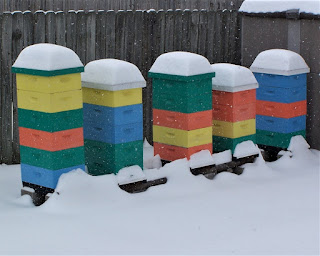Beekeepers are science people. Everyday, they practice applied honey bee biology. Successful beekeepers apply both the craft of beekeeping passed down for generations by those who handled bees and the science of honey bee health. The science is our understanding of the life cycle and nature of honey bees and their pests and pathogens based upon observations and experiments. Our understanding of the science is not fixed; it changes as more observations are made and new experiments are designed, conducted, and repeated. Successful American beekeepers adjust their beekeeping practices to help their bees survive the adverse effects of viruses vectored by two invasive parasitic mite species that arrived in the mid-1980s and an invasive hive-scavenger beetle introduced in the late-1990s. Those who do not take measures to combat these invasive species see their bee colonies die. As colonies decline before dying, they spread pests and pathogens to other hives.
Beekeepers, and the public at large, are continuing to cope
with Covid-19 virus, which continues to mutate into new variants. Now, within
two years of Covid’s introduction into the human population, the U.S. has
confirmed over 800,000 deaths. Individuals who do not take precautions to avoid
the virus are likely to acquire a deadly disease. Fortunately, we have learned
much about the nature of the novel Covid-19 virus and how it is passed between people
via aerosol droplets. We have effective vaccinations, and we know that we can
greatly limit the spread of Covid by wearing masks, sanitizing hands, and keeping
a distance between people. Just as we can protect our bee colonies by controlling
the parasitic mites and their vectored viruses, we can protect ourselves, our
families, and our community by taking measures to prevent the spread of the
Covid virus. Almost everyone knows someone who has been affected by the Covid virus.
I look forward to meeting beekeepers at our training events in the coming year.
The Underhill family of Peace Bee Farm wish everyone: Peace be with you.













